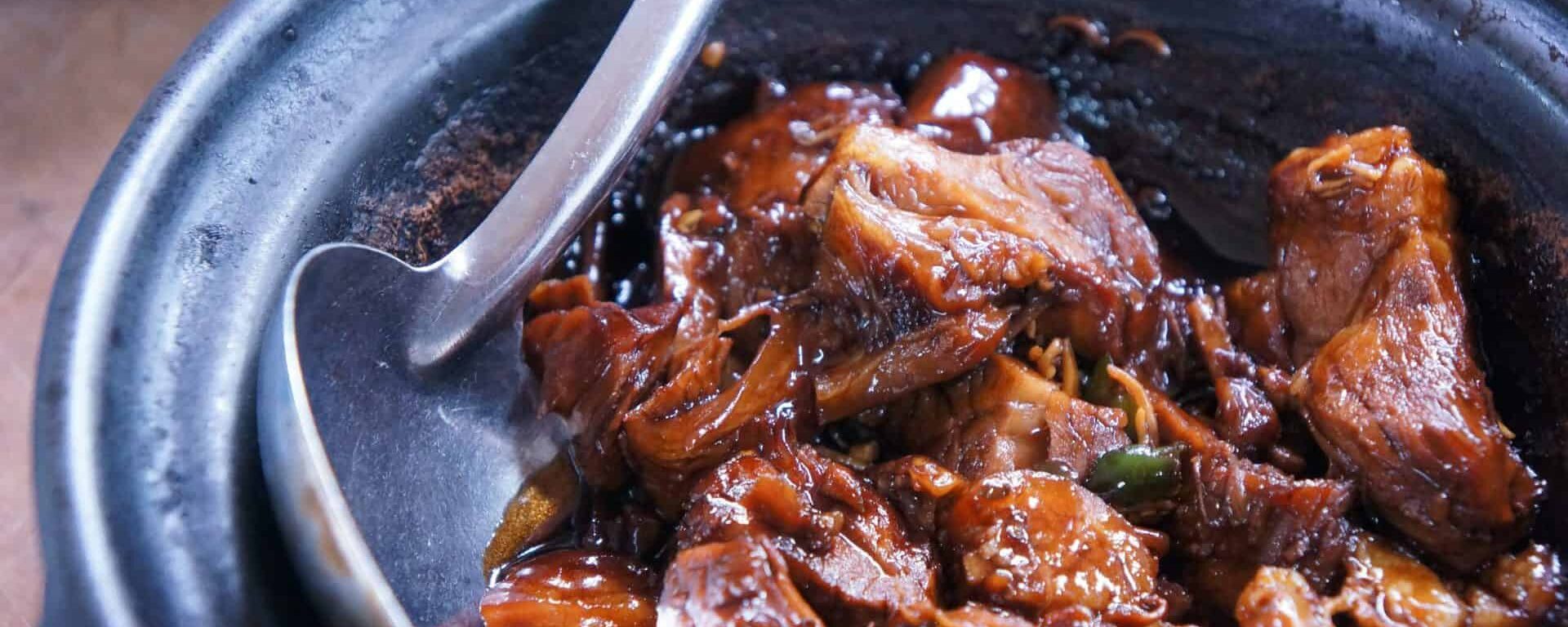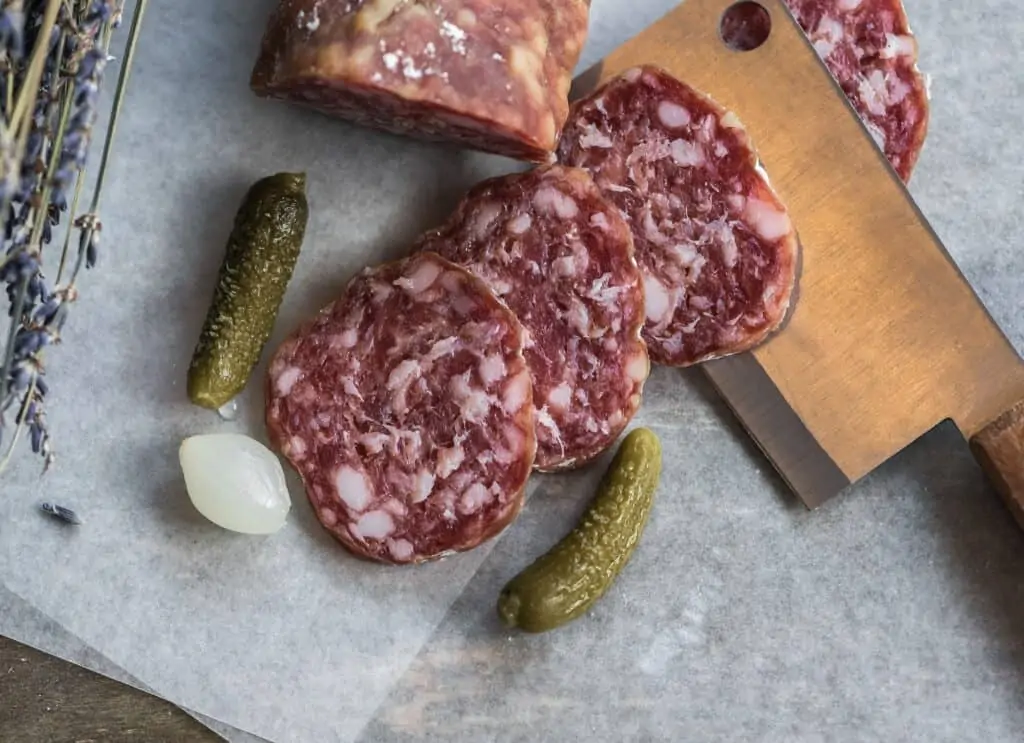
It’s been a hot topic in the health and wellness sphere for several years now, and it doesn’t look like it’s going away any time soon: the keto diet.
So, what is it exactly?
This hugely popular diet trend takes the principles of low-carb eating to the next level, and its proponents swear by it as a way to cut fat and lose weight.
However, for all of its “fast weight loss” claims, its extreme carb-cutting stance presents challenges that may be unsustainable for the long haul.
So how exactly is this high-fat, low-carb diet supposed to work, and what exactly can you eat on it?
Keto: A Quick Overview

The main idea of the keto diet is to minimize your carbohydrates and focus more on getting your calories and nutrition from dietary fat and protein.
On keto, you would generally aim to minimize your carb intake to about 5-10% of your daily calories, while your fat intake goes up to 70-80% and your protein stays at around 10-20%. In other words, you would likely minimize your carb intake to less than 50 grams – and some people can even go as low as 20 grams a day.
It’s a pretty drastic dietary change, but the main reason that people make the switch to keto is because of a little thing called ketosis: when you’re cutting down your carbs and balancing the rest of your diet accordingly, your body actually switches the way it uses energy. Normally, your body gets most of its energy from glucose in your body (which is what carbohydrates break down into). When there isn’t any available glucose in your bloodstream, your body then begins to get its energy from ketones by breaking down your available fat stores.
Now, there are both pros and cons that come from this.
The Benefits of Going Keto
1. Weight loss
Because your body starts to break down fat during ketosis, you should hypothetically lose more fat than muscle. This also means that your metabolism won’t be affected since muscle needs more energy than fat. In fact, going keto has been shown to be a more effective weight loss solution for weight management than low-fat diets. [*]
2. Improves blood sugar
Part of the reason that ketosis happens is that, as a result of the fewer carbs in your system, the insulin in your body decreases, so you take up less glucose. The effect that keto has on decreasing insulin resistance is so dramatic that it has even been implicated as a way to help treat Type 2 Diabetes. [*]
3. Helps You Feel Fuller, for Longer
When comparing keto to other diets, you might find that the keto diet is more satisfying than others, and the reasoning behind this is pretty simple. On keto, you’re putting the focus on protein and fats, both of which are more satisfying than carbohydrates. This means that you may be more likely to stick to it, which is always important for any weight loss goal.
Potential Downfalls
• Side effects. You might have heard of the “keto flu,” which summarizes the side effects that some people will experience when they first cut their carbs drastically: headaches, nausea, weakness, and poor concentration, to name a few. These effects are temporary but can be very uncomfortable.
• Nutrition deficiencies. They tend to be demonized, but carbohydrates themselves aren’t a bad thing, especially if you’re active. Carbs are your body’s most easily accessible form of energy, which makes them invaluable for fueling your workouts. Because you’re minimizing your carbs and replacing them with fats, you may also be decreasing the number of vitamins, minerals, and fiber that you would normally get from your whole grains, fruits, and vegetables.
• Ketoacidosis. This is rare with low-carb diets, but it can be very serious: too many ketones circulating in your blood can be toxic and cause ketoacidosis. This condition shows serious side-effects like heart palpitations, vomiting, and may require hospitalization. [*]
Who Should (and Shouldn’t) Go Keto?
Because the keto diet cuts your carb intake pretty drastically, it’s important to note that it really isn’t the best lifestyle fit for everyone.
Prime examples of this include athletes, hardcore trainers, and anyone else who keeps up with a regular moderate to hardcore regime. There’s a ton of evidence to suggest that going keto may actually hurt your athletic performance: having too-few carbs can lead to low energy, fatigue, and increased susceptibility to injury [*].
Even worse, if you don’t have enough carbohydrates in your diet, your recovery after a workout is impacted. Without any available stored glucose, your body begins to go through gluconeogenesis and starts using fat and protein to “refill” your glycogen stores. [*] This takes protein away from your muscle synthesis and begins to cause muscle breakdown, effectively canceling out all of the “fat-burning” benefits that make keto so popular!
So the best candidates for doing keto would actually be people who aren’t as active and rely on diet alone for weight loss. Because they don’t need the same amount of energy or muscle recovery as athletes, the keto diet may be a good food-based solution to lose fat.
What Can I Eat on Keto?
So now that you know a little bit about the pros and cons of keto, let’s take a look at what the diet itself actually entails.
Remember, the aim of keto is to minimize your carbs and focus your calorie intake on lean proteins and fats. Additionally, you should be making an effort to stick with whole foods, rather than processed versions. Here are some keto-friendly items:
1. Red meat and poultry
Meat is definitely a keto diet staple since it’s a valuable source of animal-based protein. Beef, pork, lamb, and other red meats are great. You can also have some processed meats like bacon and cold cuts, but be sure to watch the saturated fats and nitrates and choose these less often.
Always a popular lean protein choice, chicken and turkey are also great options when you want to maximize your protein intake without going overboard on your daily fat serving.
P.S.: Get some of the highest-quality meats here at Belcampo AND use CODE: PRIMAL10 for 10% OFF!
2. Seafood
Fish and shellfish are great sources of both protein and healthy fats. To maximize the benefits of your seafood choices, go for fatty, oily fish like tuna and mackerel more often to get more of those essential omega-3 fatty acids.
3. Vegetables
On keto, you’ll want to make sure that the vegetables you choose are low in carbs, so you would do best to avoid the starchy servings like potatoes, peas, and squash. On the other hand, things like leafy greens, sprouts, carrots, peppers, and cucumbers are full of nutrition and minimal carbs.
4. Oils
One of the best ways to get your daily fat serving is to add in healthy oils like olive oil and coconut oil. Use them in the cooking process or as part of your dressings and marinades. And remember: always purchase virgin, unrefined, cold-pressed varieties to ensure the oil is quality.
5. Nuts and seeds
These healthy staples are excellent to add to your keto diet: they’re high in healthy fats and have a good amount of protein without a ton of carbohydrates.
6. Dairy
Dairy is generally accepted in keto because it tends to have a good amount of fat and protein.
If you do decide to add these, make sure that you’re choosing unsweetened versions to minimize your sugar intake, as well as organic and pasture-raised to avoid toxic chemicals and added hormones.
My advice since so many are sensitive to dairy is to opt for non-dairy yogurts and milks, such as coconut, and save the full-on dairy for once-in-a-while.
7. Avocados
Everyone’s favorite healthy fat is also keto-friendly! Half of an avocado will provide 12 grams of fat for its 130 calories – and as a bonus, they’re great for breakfast, lunch, dinner, and anywhere in between.
And on the topic of things to avoid on keto, avoid reaching for anything sugary or high in carbohydrates. This includes things like baked goods, rice, and alcohol. In fact, even “healthy” carbs like legumes, whole grains, or excess fruit don’t have much of a place in keto. The majority of your carbohydrates should be coming from those low-carb veggies mentioned above.
Remember, just like with any diet or lifestyle change, the goals are to keep it healthy and consistent!
And on the topic of things to avoid on keto, you shouldn’t be reaching for anything sugary or high in carbohydrates. In fact, even “healthy” carbs like legumes, whole grains, or excess fruit don’t have much of a place in keto. The majority of your carbohydrates would be coming from those low-carb veggies mentioned above.
However, with that being said, I always recommend including plenty of whole food-based carbs to fuel training, such as:
• Sweet potatoes
• Winter squashes like butternut squash, pumpkin, spaghetti squash
• Low-sugar fruits like berries and kiwis
• Quinoa
• Exotic roots like cassava root, taro, and jicama if you have access
Key Takeaways
The keto diet is a popular choice for many looking to lose weight and get fit because of how it can change the way your body uses energy. On the other hand, its extreme carbohydrate-cutting means it’s not ideal for everyone, especially athletes and other active people.
If you do decide to try out the keto diet, make sure that you’re choosing fresh whole foods that put the focus on minimizing your carbohydrates. And also consider doing this diet cyclically, or for a certain span of time only, which would mimic natural low carb days if you were out hunting for food in nature.
To Recap
• On the Keto diet, you can eat low-carb foods such as: meats, fish, non-starchy veggies, leafy greens, nuts, seeds, and oils
• This can help put the body into ketosis, or a state where your body is burning mostly fat
• While attractive, this may hinder performance in the long run
• I recommend sticking to whole, natural carb sources and including them regularly in your diet for maximum nutrition